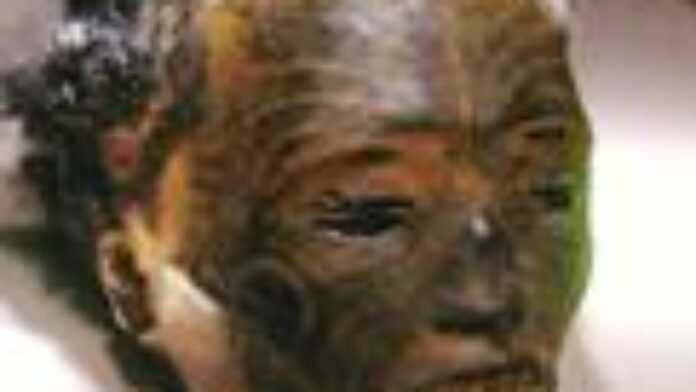
A mummified Maori warrior head at the Rouen museum, in France, finally returns home to New Zealand after more than 200 years. This unexpected decision also concerns 15 other heads in several museums across France. The issue was triggered by a bill that was originally passed by the French Senate in June 2009 and adopted Thursday, April 29, by the majority in the National Assembly. It came into effect on Tuesday. But could this new legislation revolutionize the landscape in what concerns the restitution of African cultural assets?
Eight years after the passage of a bill that saw the handing over of the remains of Saartje Baartman, a.k.a. the Hottentot Venus, to South Africa the adoption of a new French law by an overwhelming majority could encourage the debate on the restitution of cultural property.
Thursday, April 29, members of the National Assembly voted en masse to adopt a bill that seeks the return of 15 mummified Maori heads, dotted around several French museums, back to New Zealand.
Proposed by Catherine Morin-Desailly, centrist Senator of Rouen, the bill was accepted by the Senate last June (2009) without amendment, by all present.
And the solemn vote that took place Tuesday, May 4, marks a point of no return towards a final adoption of the bill, with 457 MPs in favor and a meager 8 against.
The decision comes as a total surprise, considering that a request for the return of one of the Maori heads, at the Rouen Museum, had been rejected by the French authorities some three years ago, after some enthusiasts argued that other collections could be affected.
But is this the end of the road for countries seeking the return of their cultural property? Although uncertain, Abdoulaye Camara, former president of the Museum of African Art in Dakar believes that “it’s a huge leap forward. Before this law, European museums did not want to hear about restitution. Now they are beginning to consider it. This can set into motion the issue of restitution of African cultural property.”
It is a complex bill that only concerns human remains for now. Human remains that some museum officials have said could have been products of murders perpetrated in the search for exotic collector items in Europe in the 18th and 19th Centuries.
But “can humans be considered a collector’s item?” Asks Mr. Camara. The answer is yes. And it is precisely on this point that this new legislation could be considered as being revolutionary.
It seeks to “reactivate” a procedure to downgrade public collections deemed “inalienable”. The procedure is expected to allow for the return home of many human remains exhibited as exotic oddities, more often than not, within the confines of Western museums.
“The ordinary mind can hardly fathom how these human remains could have stayed without burial, and far from their homeland,” says an outraged Abdoulaye Camara.
And the French National Assembly (Parliamentary) Relations Minister Henri de Raincourt agrees: “From a ritual showing the respect of a tribe and family toward their dead, the mummified heads became the object of a particularly barbaric trade due to the curiosity of travelers and European collectors”.
This piece of law therefore answers an ethical question that has been ignored for a long time. These human remains, which on the one hand are regarded as collectors’ items or pieces of art by Western art enthusiasts, and sacred by their own people on the other hand, can finally enjoy their long overdue homecoming and burial.
The preserved Maori head in Rouen was offered by an individual in 1875. Several cities around Europe, including Geneva, Glasgow, Edinburgh, London and Copenhagen have already responded positively to New Zealand’s request for restitution.
Last year, The Netherlands gave back the head of King Badu Bonsu II, beheaded in the Gold Coast (now Ghana) 171 years ago by the Dutch, to Ghana. His head had been preserved in formalin and kept in the reserves of a medical center.
In 2002, France gave the body of Saartjie Baartman back to South Africa. After her death, the South African woman’s corpse was cast in plaster and dissected, nicknamed The Hottentot Venus and displayed at the Museum of Mankind (Musée de l’Homme) in Paris.
“There are some things which are above art and which should remain sacred,” Catherine Morin-Desailly told the Associated Press.

